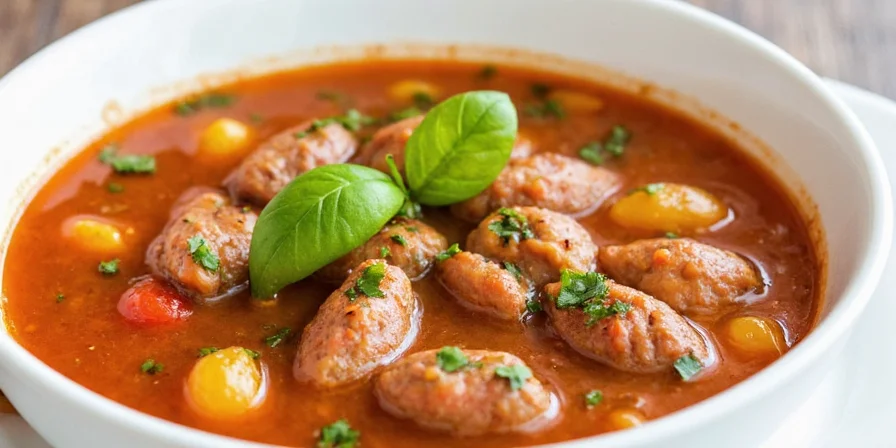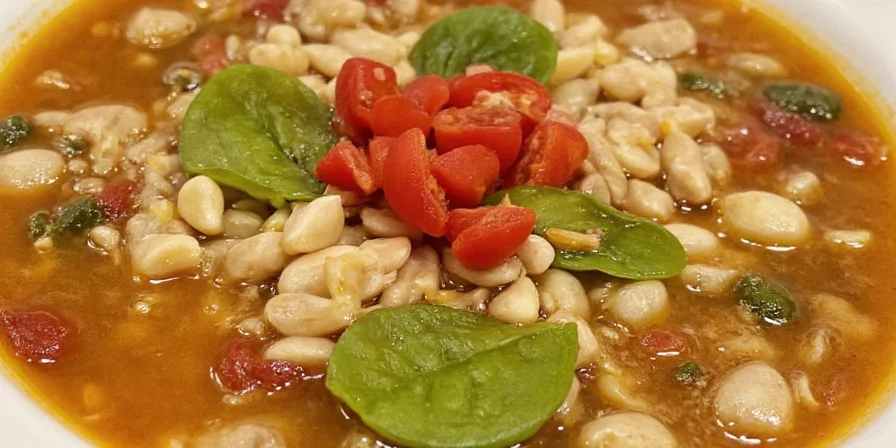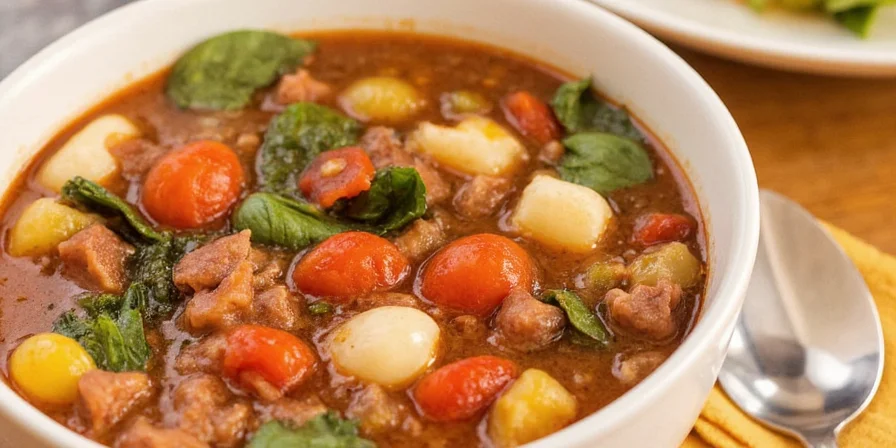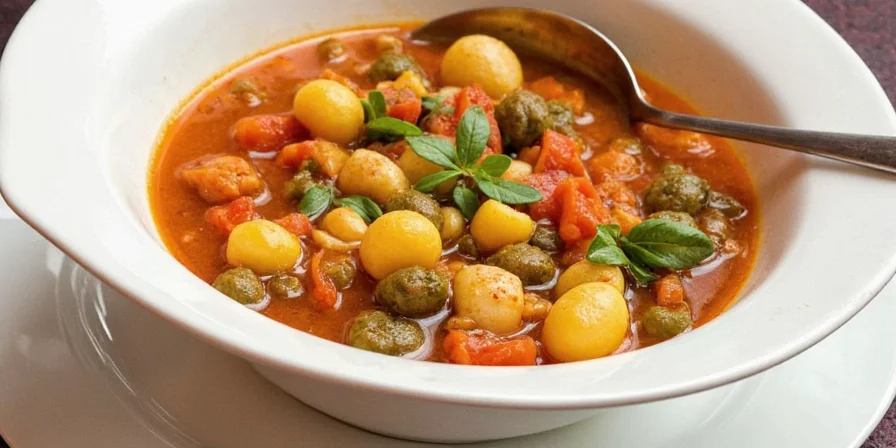If you're searching for Italian Wedding Soup spices, here's what you need: the essential spice blend includes 1 tsp dried basil, 1.5 tsp oregano, 1/2 tsp red pepper flakes, 1 rosemary sprig, 1 tsp fennel seeds, 3 thyme sprigs, and 1/8 tsp nutmeg. This precise combination creates authentic regional flavor profiles—Northern versions emphasize nutmeg with minimal heat, while Southern recipes double the red pepper and oregano. Unlike generic recipes, authentic preparation requires specific timing: bloom heat elements first, add woody herbs early, and delicate spices last for molecular flavor integration.
Authentic Italian Wedding Soup Spice Measurements (For 4 Servings)
Before exploring the regional variations and science behind these spices, here's the practical reference you need:
| Spice | Measurement | When to Add | Regional Variation |
|---|---|---|---|
| Dried Basil | 1 tsp | Last 5 minutes | Central/South: standard; North: reduce by 50% |
| Oregano | 1.5 tsp | With broth base | South: double; North: eliminate |
| Red Pepper Flakes | 1/2 tsp | Bloomed in oil first | South: 1 tsp; North: omit |
| Rosemary | 1 sprig | Early simmer | North/Central: standard; South: omit |
| Fennel Seeds | 1 tsp | With meatballs | Central/South: standard; North: omit |
| Thyme | 3 sprigs | With broth base | National standard |
| Nutmeg | 1/8 tsp | In meatballs | North: standard; South: reduce by 50% |
Why Most Italian Wedding Soup Spice Recipes Fail
Italian Wedding Soup's name creates confusion—"wedding" refers to harmonized ingredients, not matrimony. Historical records show Northern Italian versions (minestra maritata) prioritize subtle spices with leafy greens, while Southern iterations feature bold heat. This regional duality explains why generic recipes often miss the mark: they ignore Italy's spice geography and chemical interactions that create authentic flavor.

Modern recipes frequently omit the critical insight that spice timing matters more than quantity. For home cooks seeking authentic depth, understanding these regional frameworks transforms ordinary broth into extraordinary comfort food.
Non-Negotiable Base Ingredients for Perfect Spice Integration
These form the structural foundation that allows spices to shine:
- Protein: Ground pork-beef blend (80/20 ratio) or plant-based alternative
- Binder: Panko breadcrumbs (improves texture for spice absorption)
- Broth base: Homemade chicken stock with Parmesan rind (creates umami foundation)
- Greens: Escarole for authenticity (kale works but alters spice profile)
- Pasta: Acini di pepe (orzo changes spice release kinetics)
Spice Functionality: How Each Ingredient Creates Flavor Chemistry
1. Dried Basil – The Flavor Bridge
Linalool compounds bind meat and vegetable flavors. Use 1 tsp dried (not fresh) added during final 5 minutes—adding earlier degrades volatile compounds. Central and Southern Italian kitchens rely on this for balanced integration.

2. Oregano – The Flavor Amplifier
Thymol enhances umami perception. Add 1/2 tsp to meatballs, 1 tsp to broth—excess causes bitterness. Southern Italian versions double this measurement for bold heat profiles that define Campania region cooking.
3. Red Pepper Flakes – The Heat Catalyst
Capsaicin accelerates flavor compound release. Bloom in olive oil first to activate—never add directly to broth. Northern recipes omit this entirely, while Southern versions double the amount for authentic regional character.
4. Rosemary – The Structural Herb
Carnosic acid stabilizes broth emulsion. Simmer whole sprigs for 20 minutes (remove before serving) for pine notes without harshness. Essential for Northern Veneto region preparations but omitted in Southern versions.

Regional Spice Traditions: Choose Your Authentic Path
Authentic preparation varies dramatically by region—a critical nuance most guides overlook:
- Northern Italy (Veneto): Nutmeg-dominant with minimal heat. Rosemary used sparingly; fennel and red pepper omitted. Ideal for delicate palates seeking subtle flavor integration.
- Central Italy (Rome): Balanced profile—equal oregano/thyme with moderate red pepper. The most approachable version for beginners learning authentic spice timing.
- Southern Italy (Campania): Bold heat focus—double red pepper flakes, extra oregano, garlic prominent. For adventurous cooks who want the vibrant flavors of Naples street cooking.
Science-Backed Flavor Optimization: 5 Steps to Perfect Spice Integration
- Spice Bloom Sequence: Heat oil > add dried spices > cook 30 sec > add aromatics. This extracts volatile compounds essential for authentic regional profiles.
- Acid Balance: Finish with 1 tsp lemon juice—citric acid brightens spice notes without sourness, particularly crucial for Northern nutmeg-dominant versions.
- Temperature Control: Simmer broth at 185°F (85°C)—higher temps degrade delicate spice compounds like linalool in basil.
- Layered Addition: Woody herbs (rosemary) first, earthy spices (nutmeg) with meatballs, volatile oils (basil) last—mimics traditional Italian cooking methods.
- Resting Period: Let soup sit 20 minutes off-heat—allows flavor molecules to fully integrate, especially important for Central Italian layered spice approaches.
Common Italian Wedding Soup Spice Mistakes (And How to Fix Them)
- Bitterness despite correct measurements: Overcooked rosemary or excessive oregano. Simmer rosemary no longer than 20 minutes, and never exceed 1 tsp dried oregano per quart. Acid (lemon juice) added at serving neutralizes bitterness.
- Flat flavor despite following recipe: Missing the bloom step. Always toast dried spices in oil before adding to broth—this activates compounds that create authentic regional flavor profiles.
- Spice flavors disappearing during cooking: Adding volatile spices too early. Delicate compounds like linalool in basil degrade quickly—add in final 5 minutes for maximum impact.
- Inconsistent regional results: Mixing Northern and Southern techniques. Choose one regional approach for coherence—don't combine nutmeg-heavy Northern with heat-focused Southern elements.
FAQs: Italian Wedding Soup Spice Troubleshooting
Can I substitute dried herbs for fresh in authentic Italian Wedding Soup?
Dried herbs work better for slow-simmered broths. Fresh herbs added at the end create top-note brightness, but dried versions (especially oregano and basil) develop deeper flavor compounds during cooking. Use 1/3 the amount of dried herbs versus fresh—this precise ratio maintains authentic regional flavor balance.
Why does my soup taste bitter despite following spice quantities?
Bitterness usually comes from overcooked rosemary or excessive oregano. Simmer rosemary no longer than 20 minutes, and never exceed 1 tsp dried oregano per quart. Acid (lemon juice) added at serving neutralizes bitterness—particularly important for Central Italian balanced profiles.
What's the science behind toasting fennel seeds?
Heating releases essential oils through Maillard reactions. Light toasting (1-2 minutes in dry pan) increases anethole solubility by 40%, allowing better integration with meatball fats. Crush seeds after toasting for maximum effect—this technique is essential for authentic Central and Southern Italian preparations.
How do regional variations affect spice timing?
Northern recipes add all spices early for mellow integration. Southern versions bloom heat elements (red pepper) first, adding delicate herbs later to preserve volatile compounds. Central Italian methods layer spices at multiple stages—this timing precision creates the distinctive regional profiles that define authentic Italian Wedding Soup.











 浙公网安备
33010002000092号
浙公网安备
33010002000092号 浙B2-20120091-4
浙B2-20120091-4